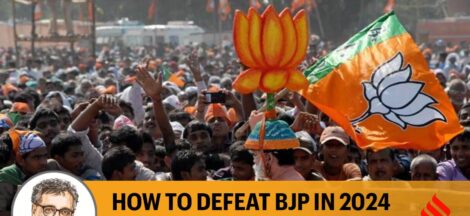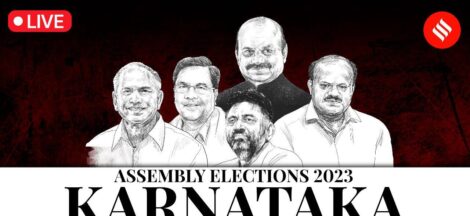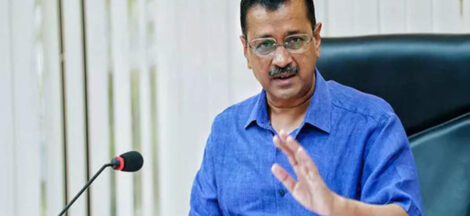By
Anirudh Deshpande
In the light of colonialist
historiography on Indian history, especially the medieval period (700 – 1800
CE), Indians became accustomed to view their medieval past in communal colors
increasingly from the second half of the 19th Century. This colonialist view of
Indian history found its way into both the nationalist and communal
historiography which flourished in India during the first half of the 20th
Century – a period characterized by the rise of mass anti-imperialist
nationalism and popular inter-communal conflict.
The emergence of the two nation theory
and Indian partition in 1947 strengthened religious nationalism in India and
Pakistan and expanded the intellectual space for the portrayal of Indian
history as a contest between separate civilizations ‘Hindu’ and ‘Muslim’. The
writing of political and military history thus became enmeshed with communal
ideology in popular memory conditioned as it was by the communal spin put on
Indian history by so called historians on both sides of the border.
In Pakistan history first became a
glorious story of Islam in the Indian subcontinent followed by the complaint of
a minority oppressed by the Hindu majority in the colonial period. In India the
myth of ‘Muslim Rule’ and Hindu slavery to the Muslims in the period 1192-1857
was propagated by the religious revivalists and communal writers since the 19th
Century.
Both communal camps deliberately
overlooked the syncretic character of the Indian civilization noticed by almost
all foreign travellers in medieval India. The European observers, in
particular, were impressed by the socio religious sufferance they saw in India
in the 17th and 18th centuries. However, in recent times, especially since 2014
in India, the Hindu communal view of Indian history has gripped the popular
imagination stoking majoritarianism into the raging political inferno of our
times. We must note that communal historians on all sides are essentially
political historians who select and distort information available in the
primary historical sources to suit their communal objectives.
Ironically a critical reading of the
sources sometimes used literally by the communal historians reveals information
which flies in the face of their assertions. The sources compel us to
reconsider the attractions of the ‘clash of civilizations’ theses made popular
by the hallucinations of ultranationalism in recent times. In the case of
medieval India the corrections begin, tellingly, with the military policies of
none other than Sultan Mahmud of Ghazna (Mahmud Gazni, reigned 998-1030 CE) who
is infamous in India for the sac of the wealthy Somnath temple more than
anything else. But Sultan Mahmud was not only a raider. He also laid down the
foundations of future ‘Muslim’ rule in South Asia. This he did by recruiting his
commanders and administrators from a variety of ethnic groups.
Contemporary sources refer to a number
of Hindu commanders who served Sultan Mahmud in numerous capacities. The Sultan
warred incessantly against the Muslim rulers of Sistan, Khurasan, Persia and
Central Asia capturing thousands of slaves who formed his ghulam corps. Of
particular significance were the Turkish slaves who made for good soldiers. He
also employed Arab and Kurd soldiers. This tradition continued among the
Ghurids and finally the Ilbari Turkish slaves founded the Delhi Sultanate under
Qutubuddin Aibak in 1192. Hindu slave troops or perhaps even mercenaries formed
an important component of the multi-ethnic armed forces of Sultan Mahmud.
Not only did the Hindu chiefs serve as
the Sipahsalars (chief commanders) of the Hindu units called the Fauj-e-Hinduan
but some of them ended up playing significant imperial roles in the court
politics of the Sultanate. According to a well researched paper by G.S.L. Devra
and Shashi Arora, “One Prince Sewand Rai attained such a high status in the
royal court that he played a significant role in the succession dispute after
the death of Sultan Mahmud.” [Hindu Commanders in the Army of Sultans of
Ghazna: A case study of Vijaypal of Bayana, Proceedings of the Indian History
Congress, 2012].
Another “prominent Hindu commander”
was Bijji Rai who is said to have served the Sultan quite well. And, finally,
who can forget the well known Tilak, the Kashmiri Hindu administrator turned
commander, of whom much is narrated in the work of Baihaqi. It is said that
Tilak finally converted to Islam after serving the Sultan for many years as a
pagan. Sultan Mahmud raided and conquered territories inhabited by multi ethnic
tribes many of whom had converted to Islam but retained their ethnic loyalties
which often became stumbling blocks in the process of empire building initiated
by the Gaznavids and later the Ghurids. Military force was the basis of such
empires and military efficiency was often achieved by maintaining a competitive
counterpoise of different ethnic fighters recruited for their martial
capabilities.
In this context the Hindu units of the
Sultan must be viewed as a corps of reliable slave-mercenaries which he
ruthlessly deployed against rebellions launched by non-Hindus. Not only did the
Hindus, like the role played by the Christian Convert Slaves, the Janissaries,
in the Ottoman Empire, balance the Turks and Afghans recruited by the Sultan
but they were crucial in crushing the Muslim and Christian resistance in the
Zarang region in 1003 CE.
The deployment of pagans against the
Muslims must have put off some contemporary Muslim observers! The Bahamani,
Adil Shahi, Nizamshahi and Mughal practice of employing Hindu commanders and
Hindu contingents is too well to be repeated here. None can forget that Malik
Ambar, the 17th Century Abyssinian General of Nizamshahi Ahmanagar, was
instrumental in recruiting Maratha troopers (bargis) and commanders on a
substantial scale to begin with. Maloji Bhonsale, Shivaji’s grandfather was a
general in the Nizamshahi Army of Ahmadnagar. And the history of Shahaji
Bhonsale, an Adil Shahi General of the Bijapur Sultanate is also well known.
In fact Maloji, the Raja of Verul, was
a follower of the Sufi Peer Shah Sharif and therefore named his sons Shahaji
and Sharifji. Muslim rulers across India continued to recruit Hindu commanders
and their contingents well into the 18th Century as witnessed by the military
adventurism of the Hindu Ascetic Gossain Warriors employed by the Nawabs of
Awadh. Hindu rulers, in turn, employed Muslim commanders and their contingents
regularly. Hindus and Muslims often formed military coalitions against common
enemies; see the case of Hasan Khan Mewati who died fighting Babur on the
battlefield of Khanua in 1527 alongside thousands of Mewari Rajputs led by Rana
Sanga or the Afghan commander Hakim Khan Sur who led Rana Pratap’s van at the
famous Haldighati Battle (1576).
Speaking of Rajputs we must revisit
the massacre of hundreds of Marathas in Jaipur by the Rajputs in January, 1751.
This event was a result of the rising popular resentment in Marwar against
Maratha political intervention and financial imposts. In the 1750s the Marwari
rulers also corresponded with Ahmad Shah Abdali who wanted to form a grand
north Indian alliance against the Maratha intruders. His vakils were also
entertained by the rulers of Marwar.
It is known that many admirals and
commanders of Shivaji were Muslims and the Maratha association with Muslim
soldiers continued in the 18th Century. The example of Ibrahim Khan ‘Gardi’,
loyal friend of Sadashiv Rao ‘Bhau’ is well known. He was the Durrani artillery
and infantry commander of the French trained Telinga corps who fought the
hardest at Panipat (1761) spurning lucrative offers made by Ahmad Shah who was
also a Durrani. In the battle Ibrahim’s close relatives died fighting and he
was severely wounded, taken prisoner and executed.
The Peshwas recruited Afghan and Arab
troops who always played a conspicuous role in battle. In fact most of the
fighting for the Peshwa Baji Rao II at Koregaon, 1818, was done by the Arab
cavalrymen who almost got the better of the Company troops. The sources,
including Vishnubhatt Godse’s Majha Pravas, also highlight the discipline and
loyalty of Lakshmibai’s Afghan contingent at Jhansi in 1857 – a fact portrayed,
in typical Bollywood fashion, in the film Manikarnika released recently.
Thus Indian military history which is
supposed to be a site of communal conflict proves problematic to say the least.
In contrast to the baseless communal assertions it proves that when it came to
politics and military service in medieval India religious identity did not
matter as much as political acumen, tactical merit and sharp swords. From this
history we can conclude that the precolonial past was a different place where
people did things differently. It is of course a different matter that this
past is distorted for political purposes in postcolonial India,Pakistan and
other places. Critical historians must do their best to rescue their subject
from the bigotries of the present in all times.(IPA Service)
The writer is
Associate Professor, Department of History, Faculty of Social Science,
University of Delhi.
The post Medieval Indian Military History Records Communal Amity appeared first on Newspack by India Press Agency.


